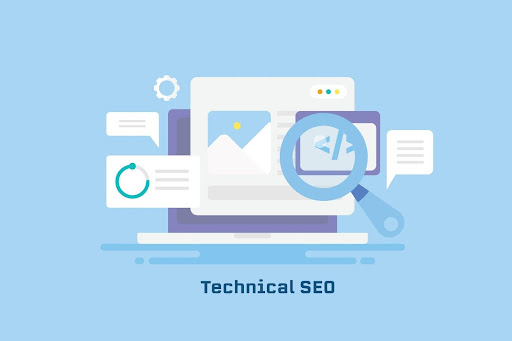The Role of Technical Auditing in Optimizing Your Website

Performing routine technical SEO audits on your website is crucial for its success in today’s digital realm. Simply possessing a website is not sufficient to guarantee its viability. In order to ensure optimal website performance, elevated rankings, and enhanced user experience, it is necessary to regularly scrutinize the code, structure, and other technical components of your website. Technical SEO audits are designed to identify and rectify any issues that may be impeding website performance. In this article, we will examine the importance of technical auditing and how it can facilitate the optimization of your website.

What is Technical Auditing?
Technical auditing involves a comprehensive analysis of your website’s technical aspects to ensure it’s performing at its best. This includes analyzing your website’s code, structure, security, speed, and other technical aspects that may affect its performance. The goal of technical auditing is to identify any issues that may be hindering your website’s performance and to provide recommendations on how to fix them. Technical SEO audits can be performed manually or with the help of various tools and software.
The Importance of Technical Auditing
There are several reasons why technical auditing is important for your website:
- Improved User Experience
Technical auditing can help identify any issues that may be affecting your website’s user experience. For example, if your website is slow to load, visitors may become frustrated and leave your website before they have a chance to engage with your content. By identifying and fixing issues that affect user experience, you can improve user engagement and reduce bounce rates.
- Higher Rankings
Search engines such as Google use various algorithms to rank websites based on their relevance, authority, and user experience. Technical auditing can help identify any issues that may be affecting your website’s ranking on search engine results pages (SERPs). By fixing these issues, you can improve your website’s visibility and increase your chances of ranking higher on SERPs.
- Increased Website Traffic
Improving your website’s performance and ranking on SERPs can lead to increased website traffic. By optimizing your website through technical auditing, you can attract more visitors to your website and potentially increase your sales or conversions.
How to Perform a Technical SEO Audit
Performing a technical SEO audit can be a complex and time-consuming process, but it’s essential for optimizing your website’s performance. Here are some steps to help you perform a technical SEO audit:
- Analyze Your Website’s Code
Start by analyzing your website’s code to ensure it’s clean, efficient, and properly structured. This includes checking for HTML and CSS errors, broken links, and other issues that may affect your website’s performance.
- Check Your Website’s Security
Security is a crucial aspect of any website. Ensure that your website has a valid SSL certificate, is protected against malware and other online threats, and follows best practices for secure data storage.
- Analyze Your Website’s Speed
Website speed is an important factor for both user experience and search engine ranking. Use tools such as Google PageSpeed Insights to analyze your website’s speed and identify any issues that may be slowing it down.
- Check Your Website’s Structure
Your website’s structure plays a significant role in its performance and user experience. Check for issues such as broken links, duplicate content, and improper use of header tags.
- Review Your Website’s Content
Finally, review your website’s content to ensure its high quality, relevant, and optimized for search engines. Check for issues such as keyword stuffing, duplicate content, and poor grammar and spelling.
In conclusion, technical auditing is an essential aspect of website optimization. By regularly performing technical SEO audits, you can identify and fix any issues that may be hindering your website’s performance, user experience, and search engine ranking. Technical SEO audits can be complex, but by following the steps outlined above and utilizing various tools and software, you can ensure your website is performing at its best.
FAQs
Technical auditing plays a crucial role in optimizing websites by evaluating their technical aspects. This evaluation ensures efficient functionality, seamless user experience, and high search engine rankings. Through the identification and resolution of issues such as slow loading times, broken links, improper redirects, and mobile responsiveness problems, technical auditing significantly enhances overall website performance and user satisfaction.
A technical audit has the power to greatly enhance website performance. By pinpointing and addressing technical issues that might be slowing it down, impacting accessibility and user experience, this process can bring about significant improvements. Slow loading times are often caused by large image files or inefficient code, which have a detrimental effect on user engagement and search rankings. Ultimately, this results in enhanced user satisfaction and reduced bounce rates.
During a technical audit, various key elements are assessed to guarantee the optimal performance of a website. These elements encompass factors like site speed, mobile-friendliness, indexing status, URL structure, metadata, server response codes, crawl errors, and XML sitemaps. Evaluating each of these components is crucial as they significantly impact how search engines perceive and rank a website. Thus, including them in a technical audit proves essential.
The frequency of conducting a technical audit depends on the size and update frequency of a website. Generally, websites should undergo a quarterly technical audit to ensure optimal functionality. It is particularly important to conduct an audit whenever significant updates or changes are made to the website. This practice ensures prompt identification and resolution of any potential issues.
During a technical audit, various common issues may be uncovered. These include broken links, duplicate content, improper use of redirects, meta tag problems, server errors, and difficulties with mobile responsiveness. Broken links not only undermine user experience but also have a negative impact on SEO efforts. Similarly, duplicate content can result in penalties from search engines. It is crucial to identify and address these issues promptly to ensure a healthy and high-performing website.
To conduct a technical audit, individuals can utilize a combination of tools and techniques available. Online resources such as Google Search Console, Screaming Frog, GTmetrix, and PageSpeed Insights are highly valuable in gaining insights into various technical aspects of a website. These effective tools aid in identifying critical issues, including crawl errors, page load times, mobile-friendliness, and more. Moreover, conducting manual checks on metadata, XML sitemaps, and server response codes significantly contributes to conducting a comprehensive audit.
A technical audit brings numerous benefits. By addressing any technical glitches that might discourage visitors, it guarantees a seamless user experience. As a result, website performance improves, leading to lower bounce rates and increased user engagement. Additionally, an optimized website stands a greater chance of achieving higher rankings in search engine results, which enhances visibility and drives organic traffic.
Technical audits are closely tied to search engine optimization (SEO). A well-optimized website that adheres to technical best practices is favored by search engines, resulting in better indexing and ranking. Technical audits address issues like proper indexing, crawlability, and mobile responsiveness, which directly impact how search engines understand and rank the website’s content.
To conduct a technical audit effectively, several tools can be utilized. Google Search Console offers valuable insights into indexing status, crawl errors, and mobile usability. By crawling the website, Screaming Frog identifies issues such as broken links, duplicate content, and metadata errors. For analyzing page load times and receiving optimization recommendations, GTmetrix and PageSpeed Insights prove to be useful. Additionally, SEMrush and Ahrefs provide comprehensive site analysis encompassing backlink and keyword data.
Once the technical audit findings are collected, it becomes crucial to implement the recommended changes. This entails addressing identified issues like broken links, optimizing image files, updating metadata, and resolving mobile responsiveness problems. By incorporating these modifications, the website’s overall functionality, user experience, and search engine ranking potential are enhanced, leading to a more prosperous online presence.
Recent Posts
- Google Search Revolutionized for Educational Videos November 16, 2023
- Bidding Adieu to Google’s Page Experience Report November 9, 2023
- Google November 2023 Core Update November 3, 2023
- Unmasking Google’s October 2023 Spam Update October 5, 2023
- Unleash SEO Power: Must-Have Chrome Extensions for Website Success September 20, 2023
- SEO-Friendly URL Optimization: Mastering Structure for Better Ranking September 20, 2023
- Real Estate Marketing Ideas: Crafting a Results-Driven Marketing Strategy September 20, 2023
- The Anatomy of a Broken Link: Causes, Effects, and Solutions September 15, 2023
- Crafting an Informative FAQ Section: A Step-by-Step Guide September 14, 2023
- Local Business Schema Markup: Elevate Your Brand With The Magic September 14, 2023
Get
in Touch
Contact AdLift for a 360-degree marketing plan
